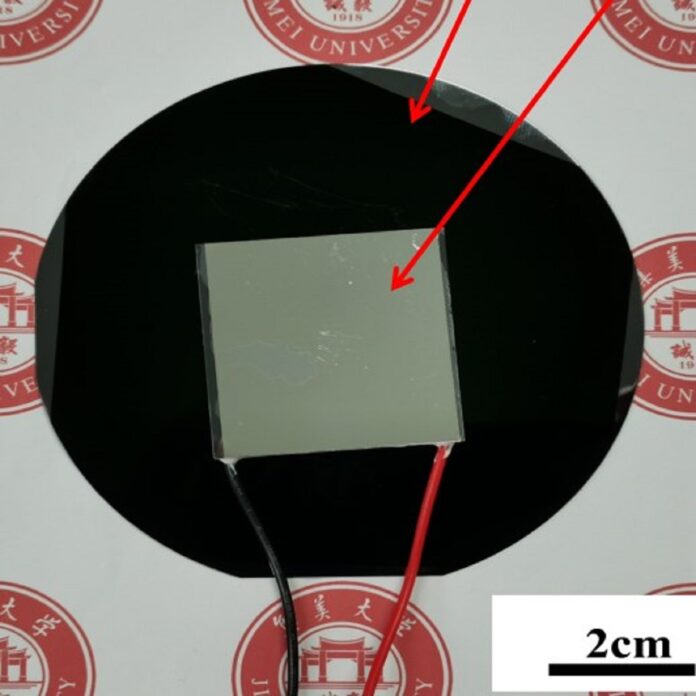As the environmental pollution and energy shortage issues rage higher, finding a new type of sustainable energy to reduce excessive fossil fuel dependence is critical. In recent decades, the development of natural renewable sources has made a positive contribution to reducing the energy crisis. However, these technologies are limited by time and space.
Recently, thermoelectric generators (TEGs) coupled with radiative cooling emitters (RCEs) have been extensively studied as a new environmentally friendly method for power supply. However, the limited and unstable temperature difference across the TEGs significantly degrades the output performance.
Now, researchers at Jimei University in China have developed a new thermoelectric generator that can continuously generate electricity using heat from the sun and a radiative element that releases heat into the air. Because it works during the day or night and in cloudy conditions, the new self-powered TEG could provide a reliable power source for small electronic devices such as outdoor sensors.
“Traditional power sources like batteries are limited in capacity and require regular replacement or recharging, which can be inconvenient and unsustainable,” said research team leader Jing Liu from Jimei University in China. “Our new TEG design could offer a sustainable and continuous energy solution for small devices, addressing the constraints of traditional power sources like batteries.”
The new TEG can simultaneously generate the heat and cold necessary to create a temperature difference large enough to generate electricity even when the sun isn’t out. The new device uses a component called an ultra-broadband solar absorber (UBSA) to capture sunlight, which heats one side of the generator. At the same time, another component called a planar radiative cooling emitter (RCE) cools down the other side by releasing heat. Both the components can be applied to a flexible substrate, which could be useful for powering wearable devices, for example.
The heating power of the UBSA is significantly greater than the cooling power of the RCE under normal sunlight intensity. This is why the researchers placed the RCE on top of a UBSA with a larger area. When sunlight hits the entire device, the unshaded parts of UBSA absorb the sun’s energy to heat up while the RCE on top begins to cool. The combination of heating and cooling creates a temperature difference that is converted into electricity.
At night or on cloudy days, the temperature difference is significantly reduced due to the absence of direct sunlight. However, there is still some temperature difference that can be utilized to generate electricity, albeit at a lower efficiency compared to a sunny day.
Researchers tested the device by conducting outdoor experiments under different weather conditions. They found that it could continuously generate electricity throughout the day and night and during cloudy daylight. The thermoelectric generator achieved a peak voltage output of 166.2 mV during clear daytime conditions, enough to power a small sensor or device. During clear nighttime and cloudy daytime conditions, it generated 14.7 mV and 95 mV, respectively.
“The unique design of our self-powered thermoelectric generator allows it to work continuously, no matter the weather,” said Liu. “With further development, our TEG has the potential to impact a wide range of applications, from remote sensors to wearable electronics, promoting a more sustainable and eco-friendly approach to powering our daily lives.”
The team is now working to further optimize the device’s efficiency, durability, and scalability and plans to test its long-term stability and reliability under various conditions. They also want to explore the potential for mass production at a reasonable cost and make improvements in the device’s performance and adaptability to different applications.
Journal reference:
- Jing Liu, Degui Li, Wenzhuang Ma, Yushan Chen, Chao Dou, Dan Meng, Qiyao He, Xiangyu Li, Xuchu Deng, and Haoyuan Cai. All-day uninterrupted thermoelectric generator by simultaneous harvesting of solar heating and radiative cooling. Optics Express, 2023; DOI: 10.1364/OE.483531
